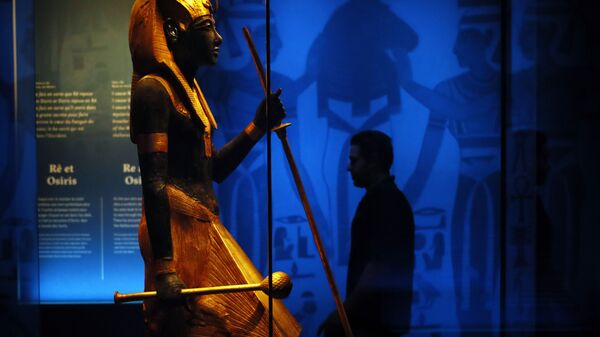Scientists and history enthusiasts have been perplexed by the mystery of Tutankhamun’s death for decades, but is there any hope that it is finally about be explained? Egyptian archaeologist Zahi Hawass has set high expectations, noting that DNA technology will assist in this, Express.co.uk reports.
According to him, DNA tests and CT scans have already shown that the Egyptian pharaoh was not murdered, as some have believed since 1968, when X-rays found bone fragments in his skull. The new tests are said to have pointed to another injury that the 19-year-old “baby king” suffered right before his death.
Accident or Not?
Hawass told the British tabloid that Tutankhamun had a fracture in his left leg, which shows the renowned Egyptian ruler experienced an accident two days before meeting his end. A new machine, which the archaeologist referred to as the Egyptian Mummy Project, is expected to give researchers more information about the young king – for example, if he had any genetic diseases.
“It will also tell us if he had an infection. If he had an infection, this means he died in an accident. Next year will be the year we announce exactly how he died”, Hawass said.
Search for Truth Doesn’t Cease to Surprise
Egypt’s Minister of Antiquities Khaled El-Enany has revealed to the outlet that the effort to shed light on the pharaoh’s death continues. According to him, researchers have not had a conclusive opinion until now.
“Each year we have a conference on Tutankhamun and each year we have something new. Dr Hawass and his team are now doing work from the CT scan of the mummy and that is still continuing”, the official said.
100-Year-Long Hunt for Truth
Pharaoh Tutankhamun’s tomb, located in Egypt’s mysterious Valley of the Kings on the west bank of the Nile, opposite Luxor, was excavated in 1922 by Howard Carter, on behalf of Lord Carnarvon.
The tomb was a veritable treasure trove that scientists and archaeologists laboured on for over eight years, as they removed the artefacts, wary of the fragile state of the tomb, with Carter ensuring that the findings were meticulously recorded.
Since then, some of the artefacts remain shrouded in mystery, as little is known about them even today.


